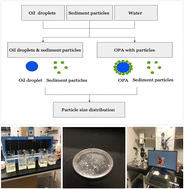Formation of oil-particle aggregates with motor oil and kaolinite clay in cold and warm freshwater
Abstract
Motor oil is one of the most common pollutants in stormwater runoff in freshwater ecosystems. It can form aggregates with solids (creating oil particle aggregates, OPAs) which complicates the understanding of the fate and transport of motor oil, particularly in cold freshwater, conditions that have not been studied extensively. Laboratory and numerical experiments were conducted with kaolinite clay and three types of motor oil in both cold and warm freshwater, in which: (1) the interaction of clay particles with motor oil was experimentally investigated, in response to changes in oil viscosity, water temperature, and mixing intensity; (2) variability in particle size distribution of the formed OPAs was measured; and (3) a mechanistic OPA formation model was applied and results were compared with experimental data. The results showed that kaolinite clay and motor oil formed mostly droplet-type OPAs, lower-viscosity oil tended to form a wider size range of OPAs, and higher mixing intensity and higher water temperature produced larger numbers of smaller OPAs. Although there was a reasonably good match between the experimental data and the modeling results, more research is needed to further improve the modeling framework.

- This article is part of the themed collection: Contaminant remediation and fate


 Please wait while we load your content...
Please wait while we load your content...